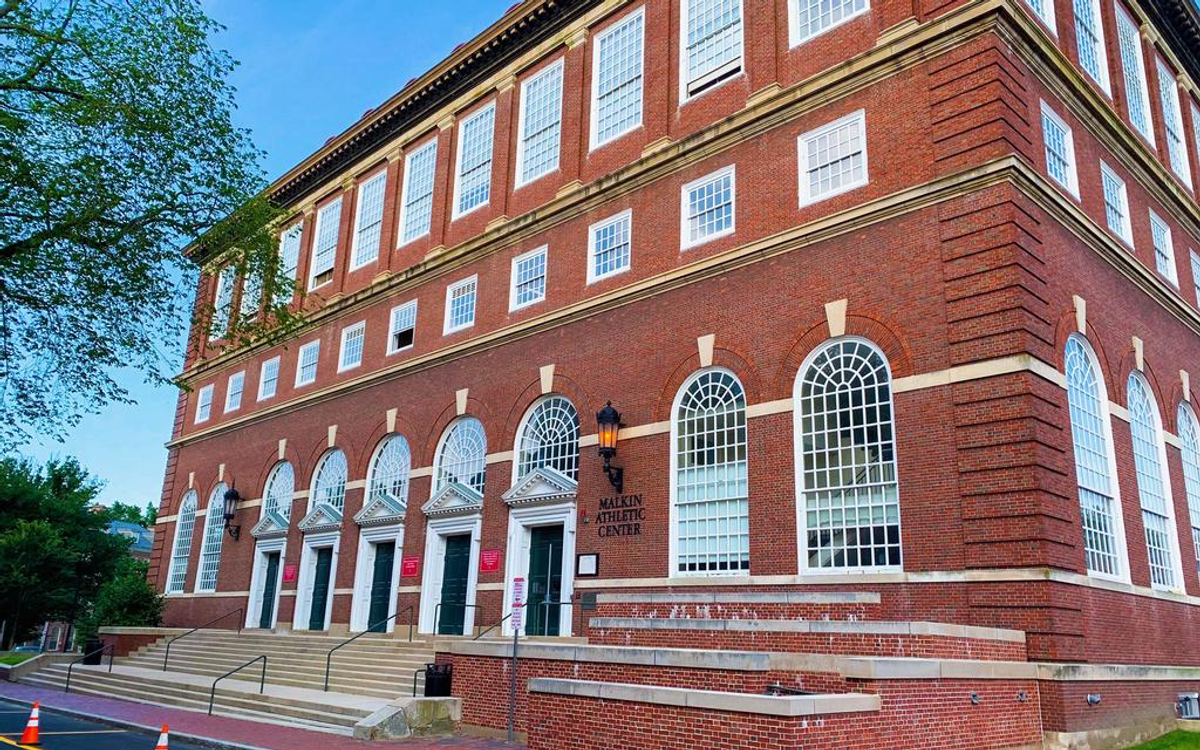
How Busy is the MAC?
An investigation into usage trends of Harvard's Malkin Athletic Center.
Introduction
As college students, it’s difficult to find a balance between classes, extracurricular activities, social life, sleep, and time for ourselves. Taking care of our bodies is often put on the back burner; we wanted to look into gym-goer trends to see if Harvard students are actually taking care of themselves.
We analyzed swipe data from the Malkin Athletic Center, often referred to as the MAC, from September 2021 to August 2022 to investigate Harvard student gym trends. Which days of the week are most popular? What times of day is the gym full? Does the gym get more crowded in the colder months? How often do students go to the gym?
Which months are most popular?
The MAC is open year-round, although with reduced hours during winter and summer breaks. Which months are see the most gymgoers?
 Figure 1: The above graph shows the number of swipes at the MAC in each month during the 2021-2022 school year
Figure 1: The above graph shows the number of swipes at the MAC in each month during the 2021-2022 school yearUnderstandably, MAC usage dropped significantly during school breaks (December – January; May – July). Activity tended to be higher in the fall than the spring, with September being the most popular month to hit the gym. Maybe activity drops when the semester gets busy and midterms start rolling around…
Which days are most popular?
To get a look into the days the gym is busiest, we analyzed the data on a weekly basis.
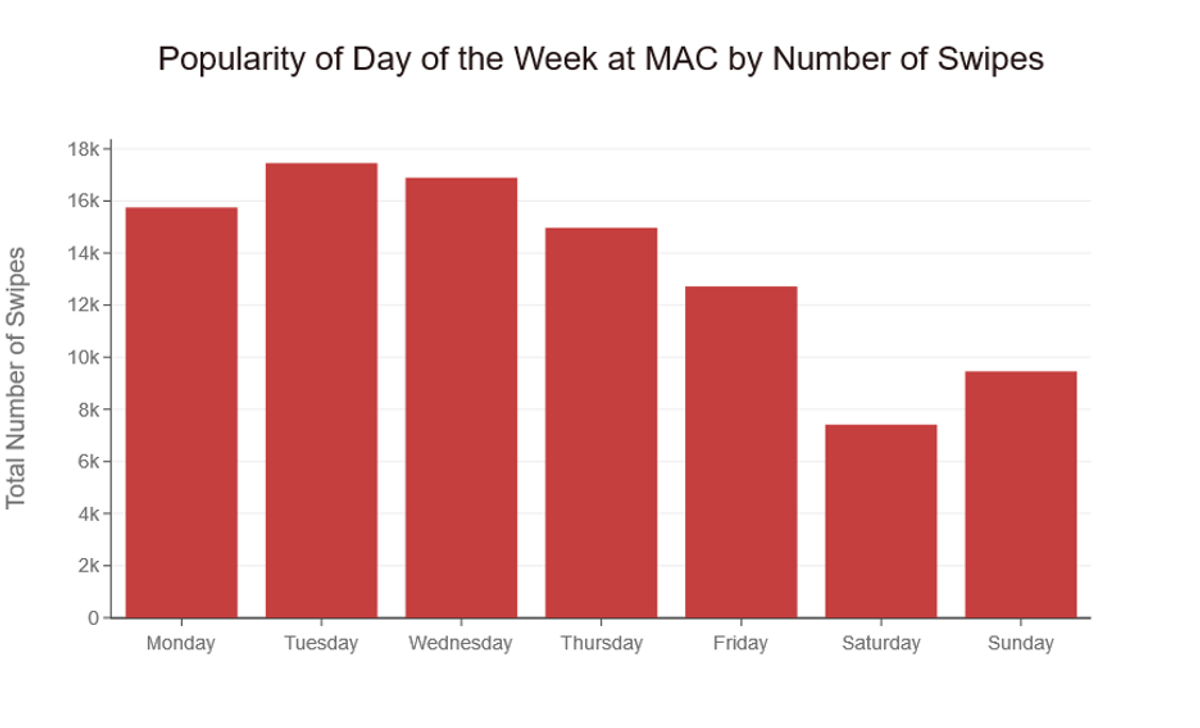 Figure 2: The above graph shows the total number of swipes at the MAC on each day of the week during the 2021-2022 school year
Figure 2: The above graph shows the total number of swipes at the MAC on each day of the week during the 2021-2022 school yearAlthough we thought that Saturday and Sunday, when no one has classes, might be the most popular days for students and faculty to use the gym, we surprisingly found that Tuesday takes the cake with the most swipes of any day. Wednesday and Monday were a close second and third, respectively. Saturday and Sunday were the least and second least popular days for gym goers, respectively. We suspect this could be because students are resting from their busy weekday schedules, sleeping through the day after a late night of partying, or catching up on their work from the prior week. In addition, student athletes, who are the most likely to be using the gyms, may be off campus for competitions on weekends.
Which hours are most popular?
We were curious about what time of day people go to the gym. Are Harvard gym goers early risers or night owls?
The MAC opens at 6 am and closes at 10 pm on weekdays, and opens at 9 am and closes at 5 pm on the weekends. We found peak activity in the mornings around 10 am and an early evening surge at 5 pm. The few 5 am swipes were likely due to MAC employees swiping in for opening shifts.
 Figure 3: The above graph shows the total number of swipes at the MAC for each hour of the day during the 2021-2022 school year
Figure 3: The above graph shows the total number of swipes at the MAC for each hour of the day during the 2021-2022 school yearUnique Swipes
Harvard College hosts about 7,200 undergraduate students in any given year. However, that number dwindles in comparison to the total enrollment of the university. Harvard University hosts about 25,000 students per year, meaning that undergraduate students only represent about 29% of the total student population!
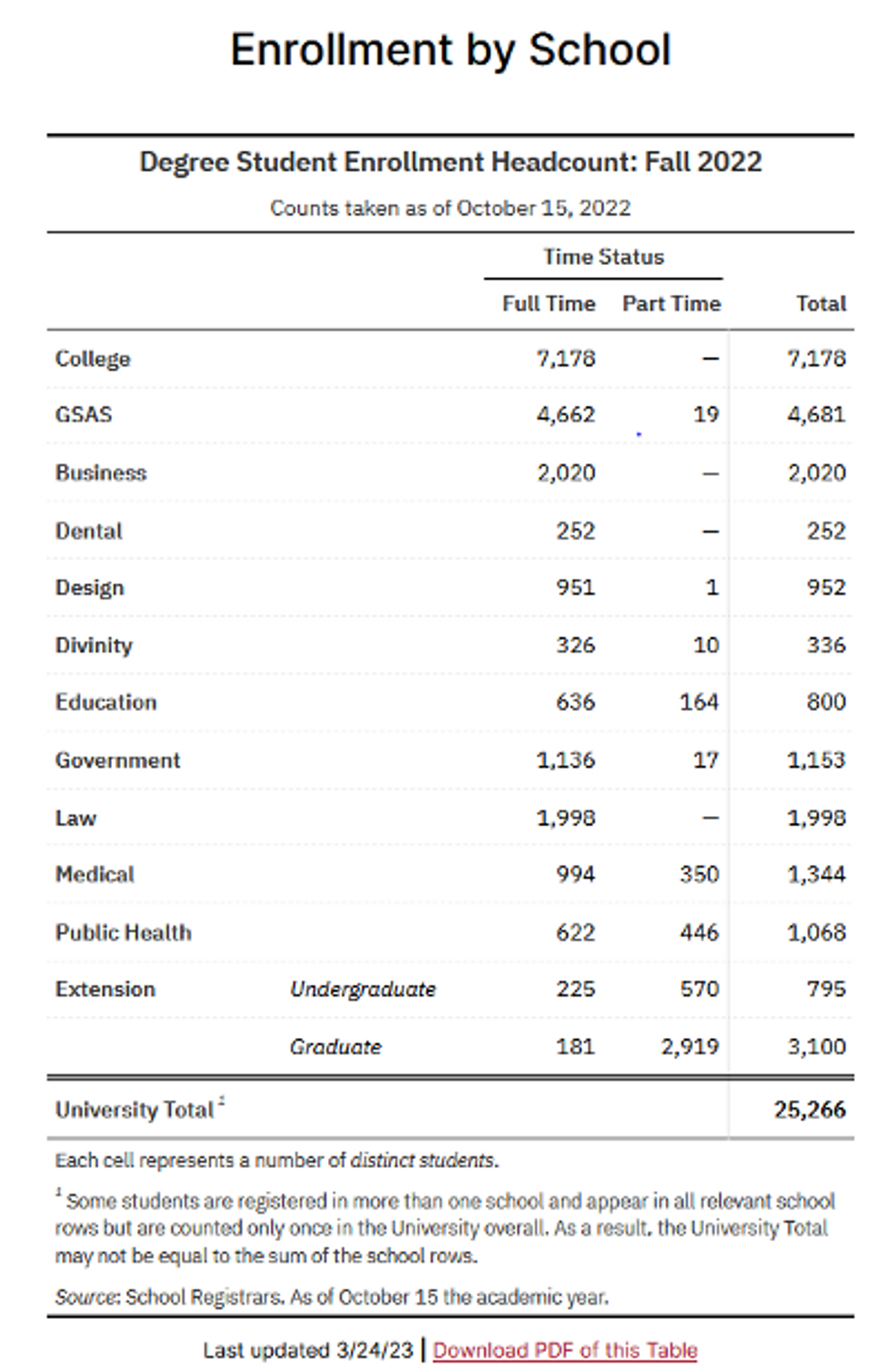 Figure 4: The above chart shows the number of students enrolled in each of Harvard's schools. Source: Harvard OIRA
Figure 4: The above chart shows the number of students enrolled in each of Harvard's schools. Source: Harvard OIRAWhat's more, these statistics only represent students. When you take into account all of the faculty and staff whom Harvard employs, the total number of Harvard affiliates grows even larger.
What makes these details important to understand is the sheer volume of swipes from IDs representing unique individuals (unique IDs) that were counted throughout the year that our data comprise. Of the 94,628 swipes that occurred at the MAC, 14,733 of those swipes were from unique IDs. This means that roughly 16% of all swipes at the MAC were first swipes from distinct individuals.
We calculated summary statistics on unique swipe counts, and some interesting points immediately jumped out at us. Even though the ID with the most swipes had a whopping 147 swipes, the median was still only at 3 swipes! The mean is also much higher, at around 6.38 swipes per unique ID, indicating it is being skewed by values on the higher end. This already paints an image of a large number of Harvard affiliates only visiting the MAC once, which we can see backed up by the following distributions.
 Figure 5: The above graph shows the distribution of the number of unique IDs per number of swipes at the MAC for the 2021-2022 school year
Figure 5: The above graph shows the distribution of the number of unique IDs per number of swipes at the MAC for the 2021-2022 school year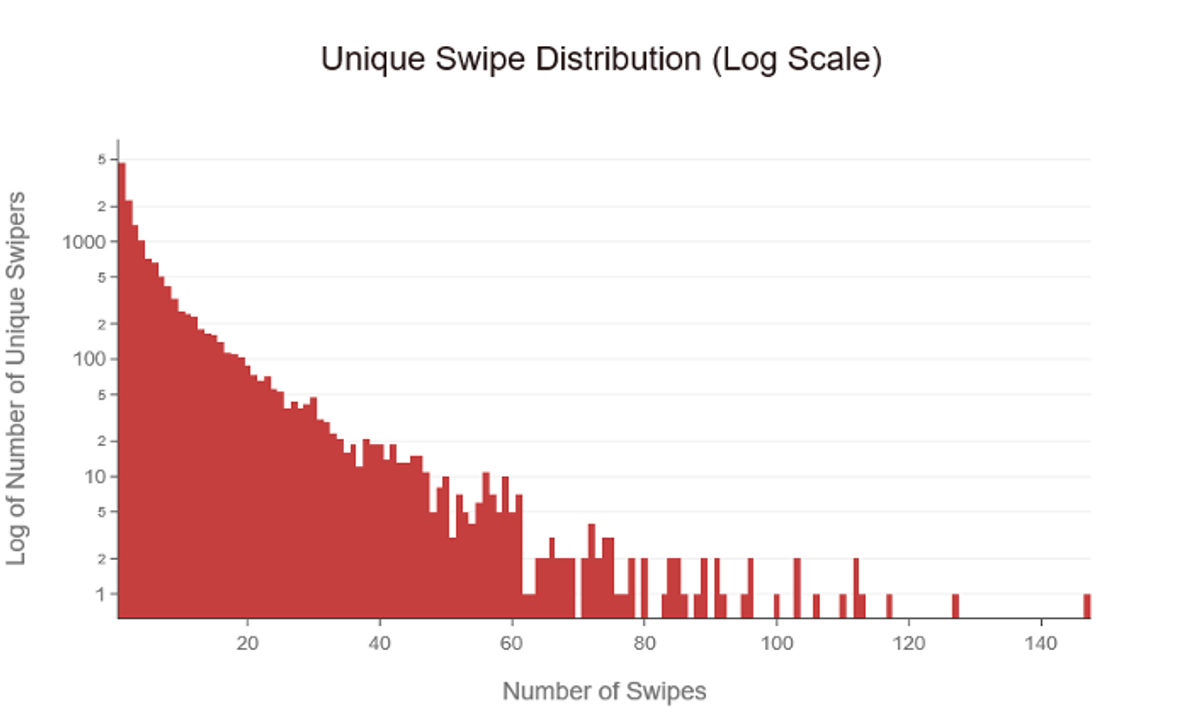 Figure 6: The above graph shows the distribution of the number of unique IDs per number of swipes at the MAC for the 2021-2022 school year on a log scale
Figure 6: The above graph shows the distribution of the number of unique IDs per number of swipes at the MAC for the 2021-2022 school year on a log scaleAs we can see, these distributions follow the summary statistics above with an extremely long right tail. Furthermore, even at the log scale, the data is very right skewed, showing that few patrons attended the gym more than just a handful of times.
We were also curious to see whether Harvard falls into the typical “New Year’s resolutions make gyms way too busy in January” trend that we hear about so often. To investigate this, we found the first occurrence of every unique swipe during our data set and mapped it against the month in which it happened. Doing so gave us the following bar graph:
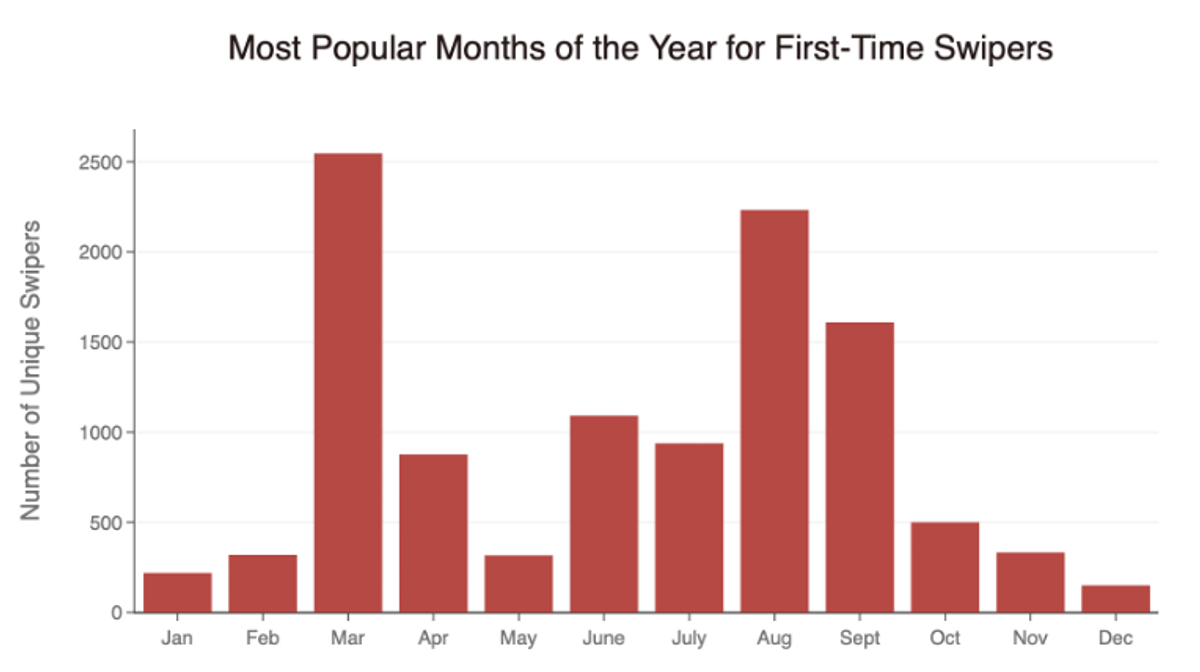 Figure 7: The above graph shows the number of first-time ID swipes at the MAC for each month in the 2021-2022 school year
Figure 7: The above graph shows the number of first-time ID swipes at the MAC for each month in the 2021-2022 school yearFirst of all, it doesn’t seem like Harvard students start hitting the gym that often in January or early in the spring semester. However, other interesting findings still jump out at us from this visualization. It makes sense that August and September have relatively high values because that is when students are often returning to campus for the school year after the summer, and are now swiping into the gym for the first time.
However, the largest spike in unique ID swipes occurs in March. This seems to be an odd phenomenon, as it doesn’t correlate with any notable markers during the year, either culturally or institutionally. In fact, spring break is usually in March, which would suggest that fewer students are on campus and using the MAC. Note, though, that this chart only shows first-time swipes, not total swipes: many Harvard affiliates may decide to hit the gym for the first time in March, but that doesn’t mean that March is the most popular month to use the MAC. Could it be that students are particularly motivated to hit the gym after getting back from spring break?
Findings like this suggest that there is still a lot more exploration that needs to be done with this data. It would be interesting to learn what specifically in March correlates with the spike in new ID values. Furthermore, we would also like to compare these trends with other Harvard campus gyms. For example, does the QRAC (Harvard’s flagship campus for all the undergraduate students who got “quadded”) also follow a similar swipe pattern, or does it differ as many of the QRAC users are students in the quad, whereas the MAC attracts both faculty and students from all of the Harvard campuses? But most importantly, trends like these could help shine a light on one of the most important questions of all: When is the best time to drag myself out of bed if I never want to fight for the 25 pound dumbbells again?
Linked here is our dataset with raw data, cleaned data, and analysis: MAC Notebooks
